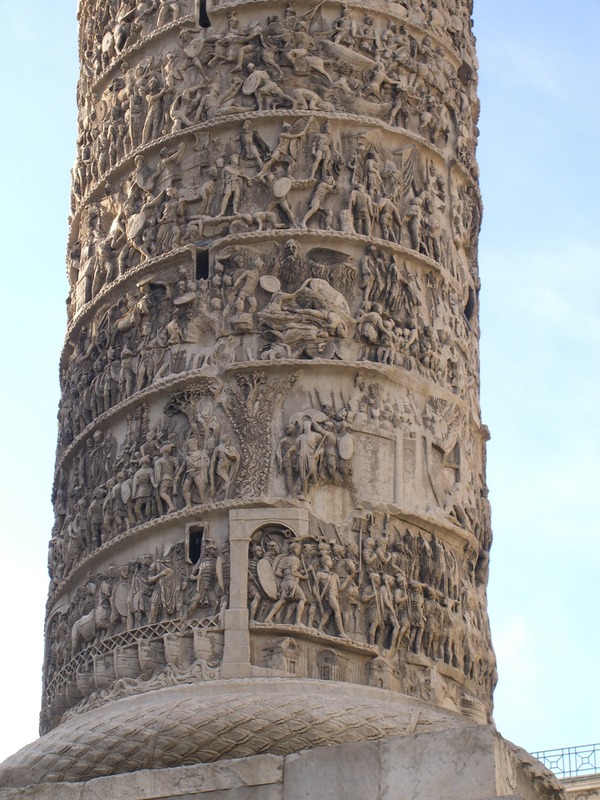Violence and History
Violence and History
The Roman Empire in the late second century was characterized by incessant wars against barbarian invasions. The instability and violence of this period influenced the artistic representations on the Column for Marcus Aurelius. The reliefs capture the theme of Marcus Aurelius’ wars north of the Danube against the Marcomanni and the Sarmatians in the 170s1, but they rarely depict specific historical events. When examined in the context of written sources, the most certainly historical scenes are “The Miracle of the Lightning” and “The Miracle of the Rain”. These scenes represent the Roman army’s total defeat of the barbarians with the aid of divine forces of nature2.
Besides these, the majority of the reliefs provide a generic account of the violent and cruel nature of the wars. Unlike the Column for Trajan, which features construction endeavors by Roman soldiers, the Column for Marcus Aurelius focuses on the conflicts during actual battles. The scenes repeatedly portray the weak and frantic barbarian people being crushed by the strong and orderly Romans. The destruction of barbarian villages, cruel punishment of enemies, and killing of unarmed civilians are believed to be more truthful representations of wars than the Column for Trajan. They reflect the vengeful nature of warfare during Marcus Aurelius’ time and serve as propaganda for the empire’s superiority.
--YQ
------------
1 Amanda Claridge, Judith Toms, and Tony Cubberley, Rome: AnOxford Archaeological Guide (Oxford:Oxford University Press, 2010), 221.
2 Martin Beckmann, The Columnof Marcus Aurelius: The Genesis & Meaning of a Roman Imperial Monument (Chapel Hill:University of North Carolina Press, 2011), 133-140.
